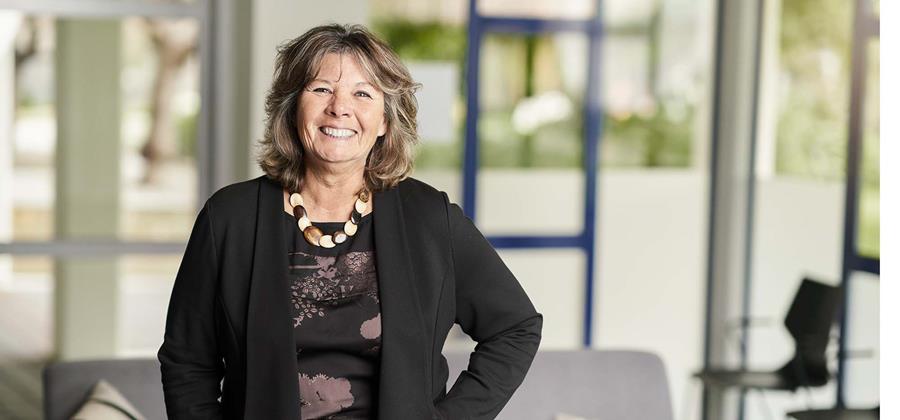
Professor Nat Waran
Kia ora e ngā Rangatira
I am hoping that the rain will eventually clear, and that summer will be upon us soon.
However, whatever the weather is, there is a lot going on as we move closer to becoming part of Te Pūkenga from 1 November this year.
This week has been a big week for research at EIT, with a powhiri to open our new rangahau Māori research centre, Te Kura I Awarua. This is a momentous occasion for EIT and for our region.
Five years ago, EIT committed to a research strategy that meant we would support and encourage applied research with a focus on working for and most importantly with our communities. This meant we would actively seek to partner, collaborate and support our communities in finding solutions to their concerns, addressing issues of importance to them, working alongside them to develop approaches that worked for them, and most importantly ensuring any knowledge gained was provided back to the community.
Te Kura I Awarua embodies the way in which an applied community centred approach to research should work..
Already there has been some excellent work to benefit the community, and a commitment of substantial National funding to enable the team to address issues related to food security, health inequities and developing communities – and I have no doubt that there will be much more to come.
Of course none of this would be possible without the vision and energy of an amazing team. The start of realising the vision for such a Centre of Excellence began six years ago, just before I arrived at EIT when the previous Dean, Dr Susan Jacobs, along with the former Research Directors and now Professors Emeritus Bob Marshall and Kay Morris Matthews, with the support of our CE, Chris Collins – agreed that a new position of Professor Māori and Indigenous Research should be created.
I was fortunate to be able to interview a number of potential inspirational candidates – and in the end it was Professor David Tipene-Leach who we appointed. David already had a strong pedigree in applied community-centred approaches to research, and we were keen to help him to develop this approach to address other matters of concern to iwi, hapu and whanau. It’s heartening to see how much the research group has grown and how like the harakeke, through rhizomic growth, the work has extended through networks and collaborations within and out our region. It was also a great day when we were able to attract Professor Annemarie Gillies to join our rangahau to help mentor and develop new members and to bring her own areas of expertise to support the centre’s growth and reach.
At the core of the work we do to benefit our community is the need to attract external research funding, but significant funding does not come unless the research is credible and communicated. The recent tribal benchmark results (where we are compared with other similar tertiary Institutes show how much we have, over many years, invested in our vision to grow our strategic research by allocating more staff time for research activities than many other ITPs. It certainly looks like this is paying off with more applied output, community projects and definitely more external research income.
Looking at our impressive ‘stable’ of researchers, I am always struck by the talented and varied team we have here at EIT and also the quality of the research projects being undertaken. Our distinctive Community Centred Research ensures that we meet local needs through collaboration, consideration of context and clear communication, enabling us to contribute positively to sustainable regional development, as well as nationally through our networks and in some areas internationally too. The key to our success is that our ‘glocal’ research has a positive impact on different communities both in our regions and elsewhere in the world.
There is no doubt that we have some significant, varied and most importantly collaborative research projects happening . From EIT’s collaboration with the University of Auckland in the Nourishing Hawke’s Bay: He wairua tō te kai project to the Making Meaning in Nature at the Ōtātara Outdoor Learning Centre, in collaboration with the University of Waikato.
It’s also great to see new research areas emerging providing support for new degree offerings in discipline areas new to level 7 + delivery. Research within the Primary Industries area that has recently gained traction involves testing cutting-edge technology that it is hoped will significantly improve the economic and environmental outcomes of soil management for the agricultural and horticultural sectors.
This new technology measures natural background gamma rays given off by soils, enabling measurement of a range of elements such as Carbon and Nitrogen, and then converts the measurements into detailed soil maps to allow farmers to have a detailed picture of their soils for precision management in relation to input (eg fertiliser amount and placement) and output expectations. The research is being conducted by Chris Thorman and Dr Glen Robertshaw, who lecture on the Environmental Management degree and Horticulture programmes at EIT’s School of Primary Industries. Chris, who is the project lead, and Glen, who is the technical lead, are conducting the research with enthusiastic support from a range of industries and farm research groups. We look forward to seeing how this develops further.
Finally – I recognise that this has been a long year, with a lot of distractions – but I hope that you will find time for a short break before we can get to the end of the semester and hopefully some summer weather. Many thanks to all of you for the energy and excitement you bring to us all by contributing to our research environment.
Ngā mihi nui
Nat
Professor Natalie Waran
Executive Dean

